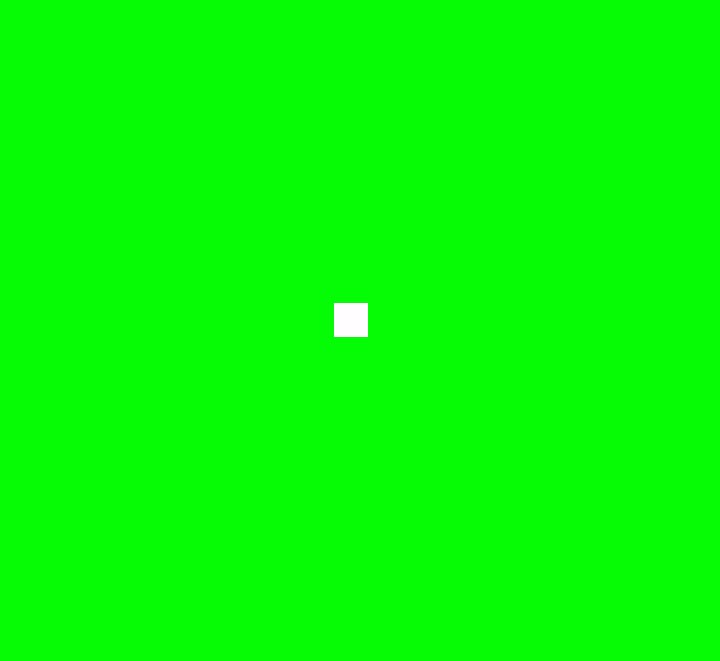

When light falls on the rods and cones in the human eye, it initiates photochemical reactions that send electrochemical signals to the brain, which interprets them and forwards this interpretation to our consciousness. Because the photochemical reactions are like any other chemical reaction, they are subject to certain limitations in terms of reaction speed. These limitations result in what many people call "ghost images" or "after images" when they stare at a fixed object for a period of time then close their eyes. What they see appears to be painted on the insides of their eyelids. These after images are divided into three groupings: negative after images, positive after images and fill after images. While the science behind what causes these ghost images is not completely understood, this page presents the most widely accepted theories for them.
Negative after images are the most familiar and easiest to experience. Holding your head and eyes very steady, focus on the left eye of the following image and count to 40. Then close your eyes and you will see a smaller version of it appearing to be painted on the insides of your closed eye lids. The colors will appear reversed: the black border will look white, the blue lines orange and the yellow interior purple. The image will be faint but once you focus on it, it'll become clearer and should be visible for ten seconds.

Try it again with the following image:

The cyan lines turn red and the magenta interior looks green.
The most widely held theory is that staring at the image depletes photo-sensitive chemicals in the eyes needed to create the image. When you close your eyes the absence of signal from the deleted areas is interpreted, or perhaps we should as the opposite color of the original stimulation. The effect is more obvious if instead of closing your eyes, you suddenly cover the computer screen with a piece of white, opaque paper. The reason red doesn't turn into green and visa versa is that the mind interprets colors based on pairs of color signals from the eye in a complex algorithm.
Negative after images can be seen without closing your eyes. Focus on the left eye of the previous happy face again and start counting. Depending on how fast you count, around 30 you should start to see darker magenta shadows floating around the left eye. What's happening is that because it's impossible to hold perfectly still, the eye moves slightly around the image. As it drifts away from the eye, part of the cyan-depleted area of the retina where the happy face's eye was focused is now over the magenta portion of the face. This strengthens the magenta color by adding a wash of red.
Positive after images only last half a second so very few people are aware of them. To view one, close your eyes for a count of ten, open them for the shortest possible amount of time while looking at the image below without moving, then close your eyes and you should see the black flower against its white background for a very brief flash.

For half a second the image should be quite bright. Closer attention reveals that a fainter positive image lasts for an additional two seconds before fading to obscurity.
One theory is that the photochemical processes in the eye have inertia, which means it can't turn off instantaneously. Another theory is that once the eye is stimulated and starts transmitting its information to the brain, it takes a certain amount of time for all for the signal to travel to the brain and get interpreted. The time it's in "the pipeline" accounts for the persistence of vision.
Fill After Images:
The theory is that the eye and brain will fill in a small area that doesn't match the larger surroundings. Unfortunately, I haven't been able to observe this affect regardless of the relative sizes of the two areas. I'm providing a test image below for anyone wishing to attempt it.

I suspect the effect is the result of the inability of anyone to hold perfectly still and keep their eyes focused on a single point. Failure to do so softens the borders of the small area so that it is difficult if not impossible to spot.
Conclusions:
After images are an interesting and easily investigated subject that are perfect for science projects. By varying colors and noting how they change the observer can quickly develop and appreciation for how the human eye perceives colors.
Return to my main page to browse 60 other subjects